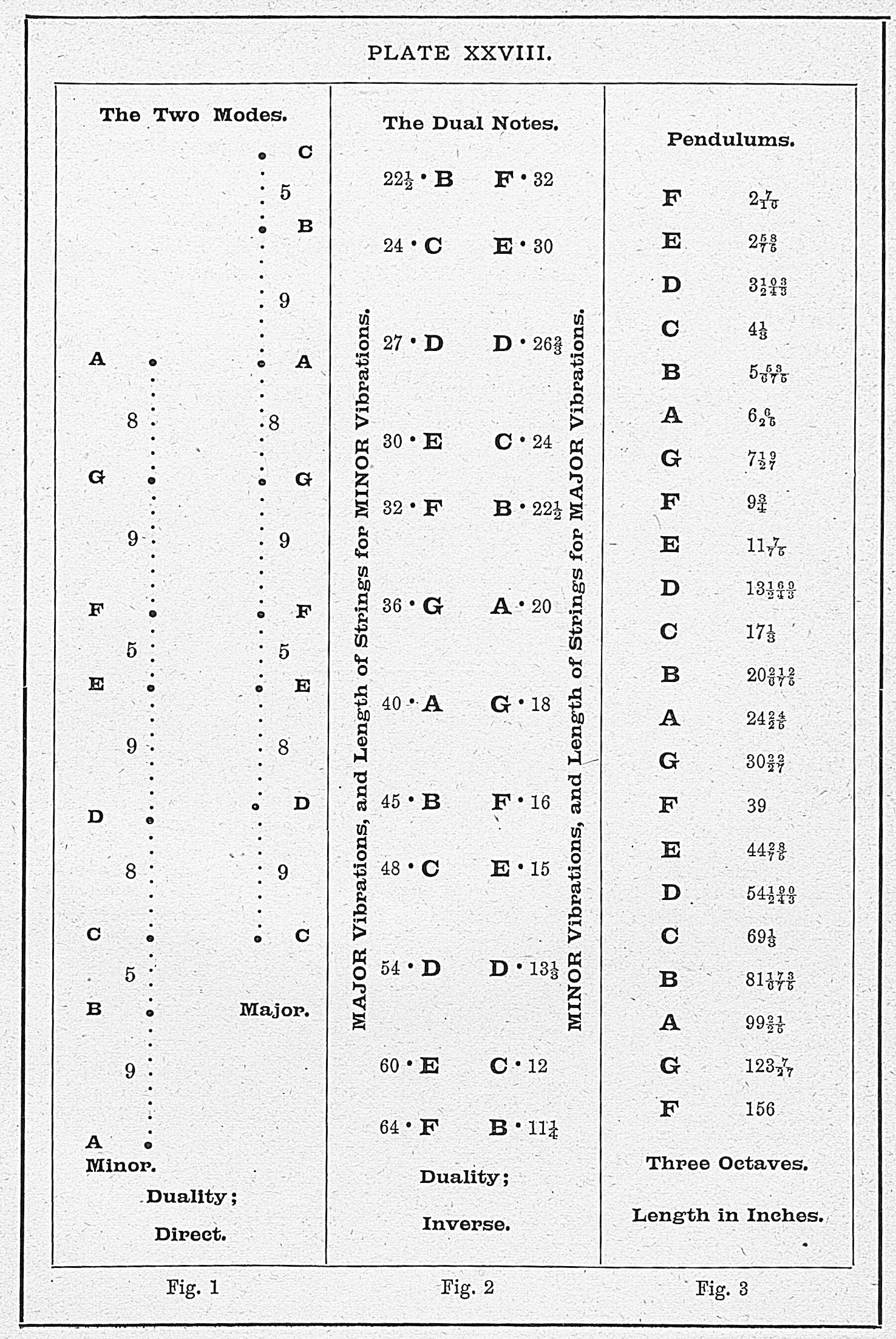
Fig. 1. - This figure shows the major and minor measured in commas and placed directly as they stand related, major and relative minor, the minor being set a minor third lower than the major. The interval between C and E in the minor is an 8-and-9-comma interval; between C and E in the major it is a 9-and-8-comma one. This difference arises from the minor D being a comma lower than the major D. In all the other intervals minor and major are the same. [Scientific Basis and Build of Music, page 120]
Fig. 2. - In this figure the two modes are placed in their inverse relation, in order to show the notes standing opposite each other in their duality. Here the two D's come also opposite each other, inasmuch as in the two modes the C-D-E interval is inverted, becoming C D E in the one and E D C in the other. And so the 9-comma second between C and D in the major comes opposite the 9-comma second between D and E in the minor, and the two 8-comma seconds, of course, come opposite each other also.[Scientific Basis and Build of Music, page 120]
Fig. 3. - This is a set of pendulum lengths for three octaves, given merely to assist any tyro who might wish to try them, but might find difficulty in calculating them.[Scientific Basis and Build of Music, page 120]
This plate is a representation of the area of a scale; the major scale, when viewed with the large hemisphere, lowest; the minor when viewed the reverse way. It is here pictorially shown that major and minor does not mean larger and smaller, for both modes occupy the same area, and have in their structure the same intervals, though standing in a different order. It is this difference in structural arrangement of the intervals which characterizes the one as masculine and the other as feminine, which are much preferable to the major and minor as distinctive names for the two modes. Each scale, in both its modes, has three Fifths - subdominant, tonic, and dominant. The middle fifth is the tonic, and its lowest note the key-note of the scale, or of any composition written in this scale. The 53 commas of the Octave are variously allotted in its seven notes - 3 of them have 9 commas, 2 have 8, and 2 have 5. The area of the scale, however, has much more than the octave; it is two octaves, all save the minor third D-F, and has 93 commas. This is the area alike of masculine and feminine modes. The two modes are here shown as directly related, as we might figuratively say, in their marriage relation. The law of Duality, which always emerges when the two modes are seen in their relationship, is here illustrated, and the dual notes are indicated by oblique lines across the pairs. [Scientific Basis and Build of Music, page 106]
